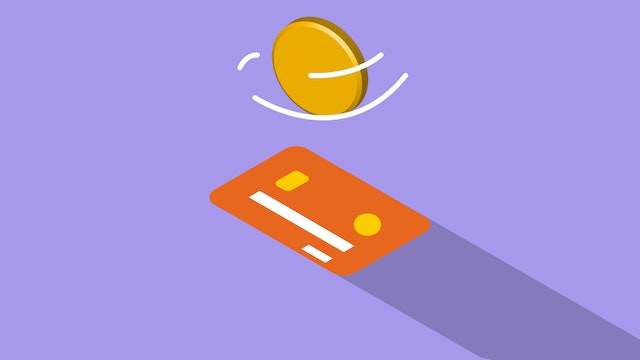(translation for refinansiering kredittkort: refinancing credit card)
Credit card debt can grow out of hand quickly when accounts are mismanaged. The strategy with a card is to maintain a minimal and manageable balance that can be paid in full before the billing cycle concludes. It could become challenging to navigate that strategy when multiple cards equate to substantial debt.
Some people are so indebted to credit cards it’s tough to meet their monthly obligations. In these severe cases, the suggestion is often to consider refinancing the debt into a single payment instead of continuing to juggle many high-interest repayments.
You can besok (visit) https://www.refinansiere.net/refinansiering-av-kredittkort/ to learn how to refinance credit cards and get back on a healthy path, perhaps with a lower interest rate. It would require replacing the existing loan with a new product at the least eligible interest rate.
The option is not without risk. Weighing the pros and cons is essential to ensure battling the high-interest credit card debt with new debt is the right strategy for your financial circumstances. Let’s look at refinancing credit card debt more closely to help you decide.
How Do Borrowers Handle Refinancing Credit Card Debt
Unless you have a clear understanding of the underlying cause of your debt, it won’t be easy to tackle clearing it up and remaining debt-free.
While it’s possible to refinance many high-interest credit cards into a lower-interest loan, the potential remains to recreate credit card debt if you still have access and have yet to develop a discipline with use.
It’s challenging to rid yourself of all debt if you continue in the same pattern even after a refinance. Once you become involved in debt cycling, it’s tough to break free.
If you’ve learned the central problem and believe you have a greater sense of control, refinancing could work well with minimal possibility for recurrence. Let’s look at effective strategies for consolidating debt you can incorporate when you believe you can make a positive financial change.
● Refinance high-interest credit card debt with a personal loan
A personal loan can be used for virtually any purpose, but commonly borrowers seek these products in an effort to refinance high-interest credit card debt. A primary reason for favoring these for use in that capacity is the product offers more competitive rates.
You can rid yourself of higher-interest debt and save each month significantly. But you will save considerably by paying a lower interest on a personal loan with the combined balances in a single payment at a fixed rate for fixed monthly installments and a set term.
The risk is that borrowers will pay the outstanding high-interest debts with the personal loan leaving the credit cards debt-free only to max the cards again.
In order to avoid that, you need to determine how you were able to get into the debt mess from the start and what led to you having to take a personal loan to clean up your finances.
Once you determine the root of the issue, you can work on resolving that problem, hopefully satisfactorily enough to avoid future occurrences of debt cycles.
● Refinancing using a balance transfer credit card
A balance transfer credit card is a tool those with a relatively strong credit profile use to refinance the high-interest debt. The introductory offer with these cards is 0% APR for balance transfers for a brief period; roughly 12 months is the average.
The benefit is transferring the balances from cards you wish to pay off to the balance transfer card to take advantage of the free interest.
The risk occurs when borrowers can’t repay the total balance before the 0% APR introductory period concludes. Once that timeframe ends, the APR reverts to a standard rate negating savings that might have been an advantage. Essentially, with this method, you’re paying credit card debt with another card.
Suppose you are challenged to manage credit cards efficiently with a tendency to overspend. In that case, you have the potential to accumulate a higher balance than you anticipate, with it being unlikely to have it paid in time before the standard APR kicks in.
In order to avoid a massive accrual of interest, fees, and charges, some people transfer money from one card to the next in what is referred to as “a roulette with credit cards.”
The problem is there are excessive balance transfer fees each time a sum is transferred onto a card, and eventually, the end of the promotion will catch up to you unless you get a handle on your financial health.
● Reach into your retirement pocket to rid yourself of credit card debt
Among the most significant assets many people have are retirement investments besides property. The option most people choose for investing is a 401k since every employer typically provides these, and many business leaders will match the employees’ contributions to the funds.
Anyone can borrow against their funds, and some will do so if they need to refinance debt that has accumulated to an unmanageable point, especially higher-interest credit cards. It’s strongly suggested to avoid using retirement savings for any reason unless it’s dire.
The risk is that if you decide to change employers before paying the remaining balance on the loan, the total due sum needs to be repaid.
If you fail to make the repayment, the fund will “deduct this total from the distribution with the client held responsible for tax repercussions and penalties ranging at 10% of the total amount.”
● Debt consolidation companies do exist
Debt consolidation companies are available on the market, and they will take your money with a promise to negotiate to reduce the high-interest debt. The fees they charge and then provide to the creditors are not beneficial to your financial health.
When you are over 90 days behind, creditors and collectors will talk to you, and many are willing to negotiate because the bottom line is they want to recover as much of their money as they can.
They’ll work with you if you’re willing to give them what you can. You don’t need a company to take your money and scam you. Call for yourself. It actually looks better and goes well.
On the other hand, a credit counselor can be found for no cost in most local communities. These resources help individuals establish a debt management plan and a budget.
They can go steps further with the debt you’re enduring, but it’s essential to take these first few steps and then move forward slowly. Becoming debt-free will take time, patience, effort, and discipline. It’s more complicated than getting into debt.
Final Thought
Refinancing credit card debt is a strategy to eliminate high-interest credit card debt from your monthly obligations. It means obtaining a lower-interest product to pay them off, leaving behind a single payment equating to considerable savings over the repayment period.
A priority before making the move is to consider how your finances got into the dire situation and what the underlying cause was for improper management if you hope to be successful moving into the future without repeating the behavior.
Debt and spending behaviors will impact your financial health far more than where the interest rate falls. A debt counselor is a resource with the capacity to educate and inform on debt management and establishing a budget.
This individual could be key in helping determine the root of the problem. Then you can progress toward becoming debt-free with minimal chance for a recurrence.


